The McLaren W1 is the latest in the sports car maker's tech-saturated Ultimate Series
First F1, then P1 and now W1, McLaren Automotive reveals its latest limited-edition supercar to the world, a £2m concoction of hybrid power and active aero that is, unsurprisingly, already sold out
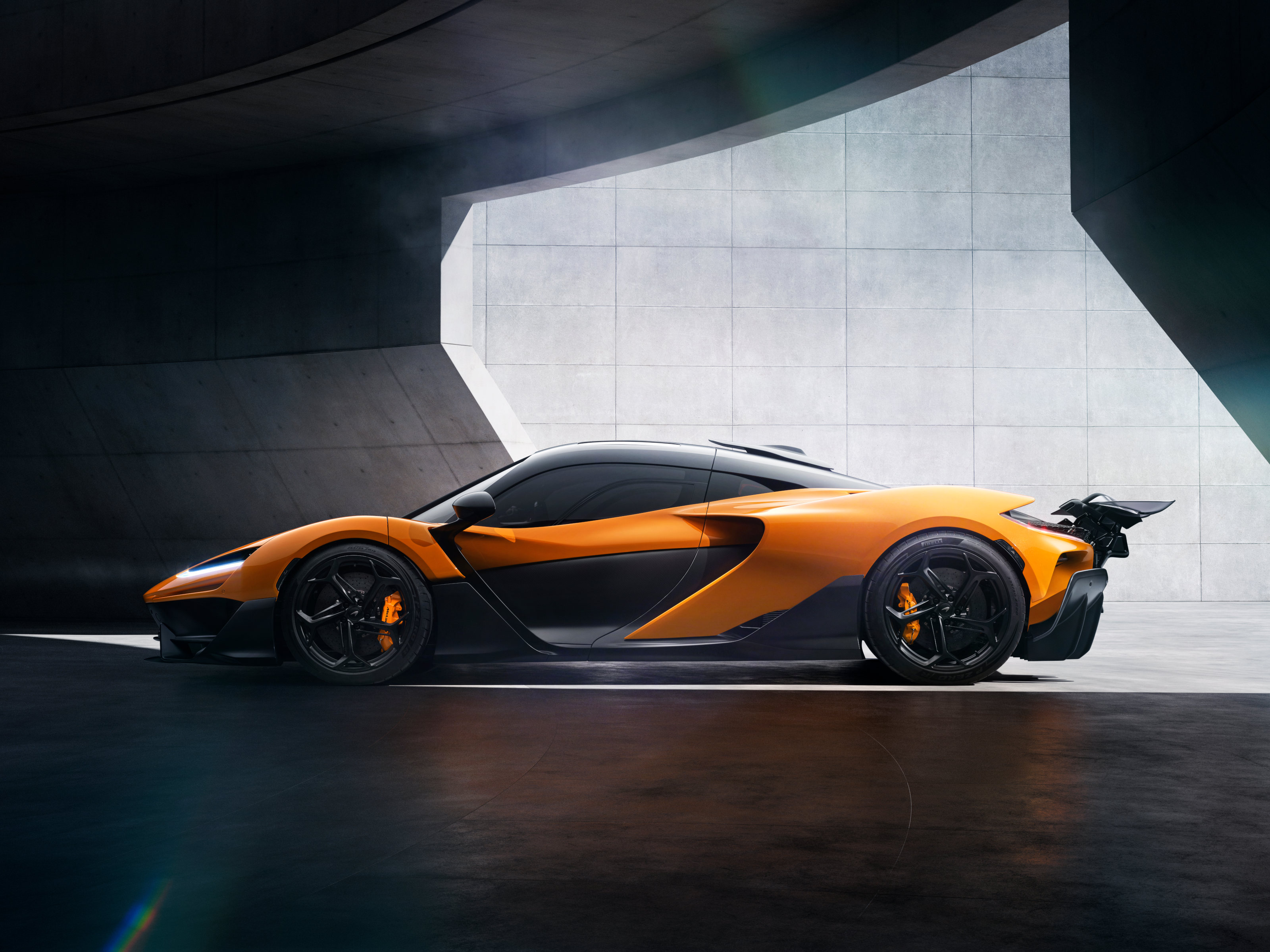
This is the Mclaren W1, a car that bears a colossal weight of expectation. Revealed 32 years after the genre-defying McLaren F1, the original supercar, the W1 is a state-of-the-nation declaration for the British sports car manufacturer, a vehicle that acknowledges its lineage while also representing the absolute latest and greatest in aerodynamic, material and propulsion technology.
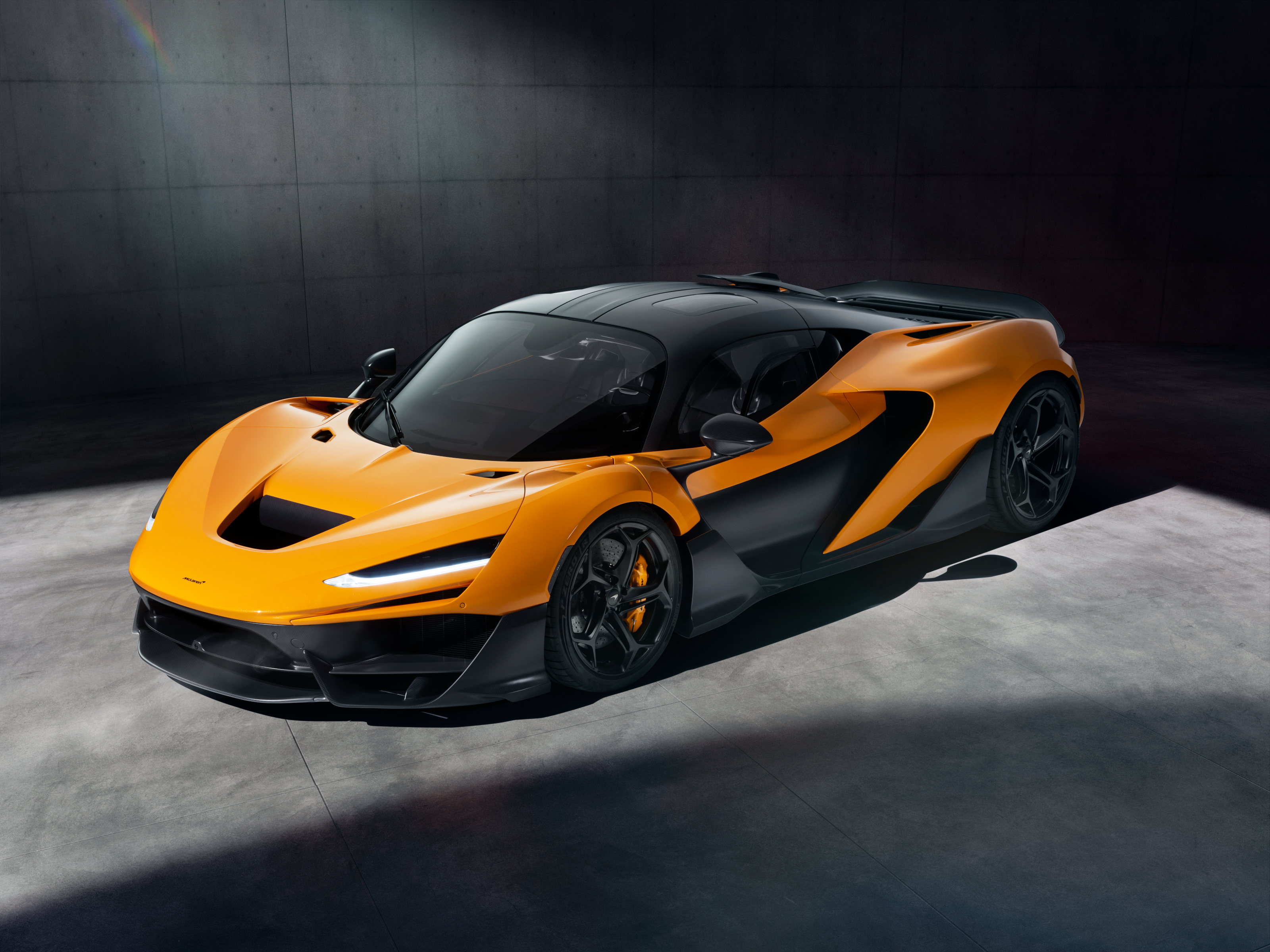
The McLaren W1
The hypercar market is remarkably buoyant, thanks to the ‘Gotta Catch ’Em All’ mentality of a relatively small coterie of carefully nurtured and flattered collectors from around the world. Car makers operating in this rarefied sphere include long-established names like McLaren, Ferrari, Lamborghini, Aston Martin and Bugatti, but also specialists like Koenigsegg and Pagani, alongside a host of upstart innovators like Automobili Pininfarina, Marc Philipp Gemballa and Naran Automotive.
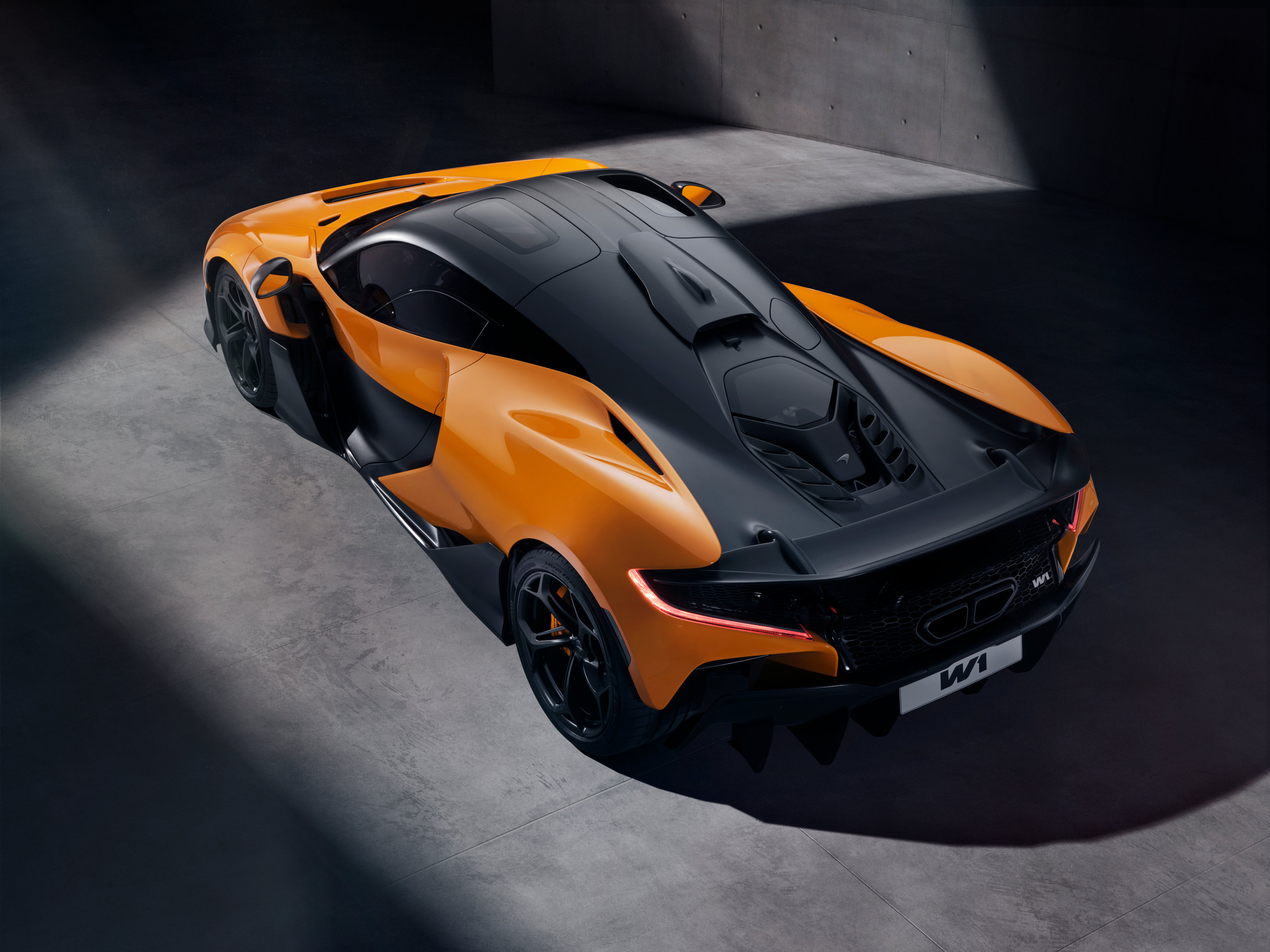
The McLaren W1 mixes extreme aero with hybrid tech
Their modus operandi? Build ultra-limited-edition, ultra-expensive machines that work just as well as investment funds as they do as performance icons. Vitally, you must ensure that the numbers, both on the spec sheet and the balance book, equal or exceed that which has gone before. Get it right, and those deep-pocketed customers will be funding tech developments that’ll eventually trickle down to production models while simultaneously burnishing the halo of the brand.
If they’re lucky, they’ll get a very good return on investment. The McLaren F1 cost around half a million pounds back in 1992. Earlier this year, an immaculate low-mileage example finished in a fetching brown-on-brown colour scheme went for just over $20 million at Gooding & Company’s Pebble Beach Auction.
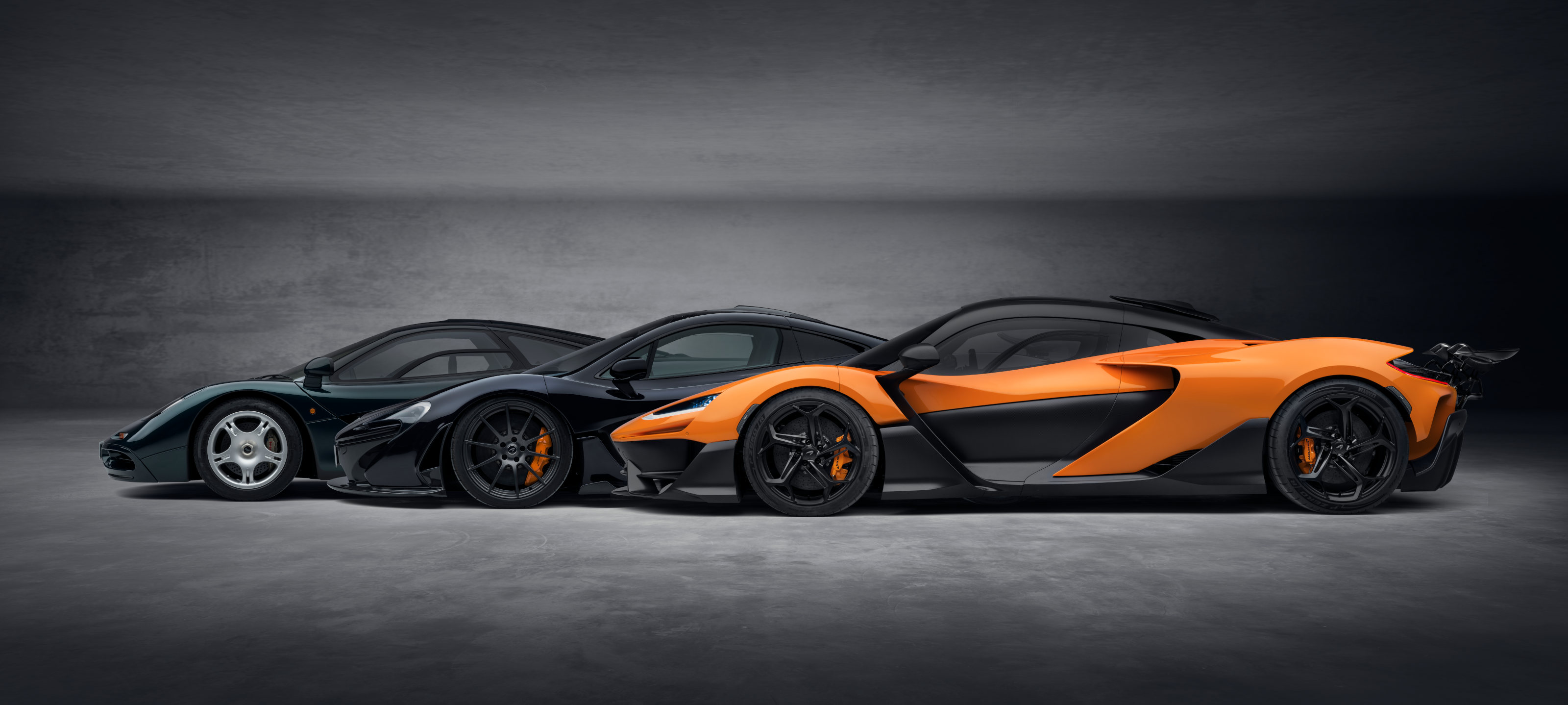
From left to right, McLaren's F1 (1992) , P1 (2013) and W1 (2024)
Then there was the McLaren P1, of which 375 were built between 2013 and 2015 and which marked the start of the hybrid sports car era. Initially priced from £866,000, you’ll now need at least seven figures to get into one. No doubt there’ll also be a bump in value as completists look to secure a matching set of McLaren’s ‘Ultimate Series’.
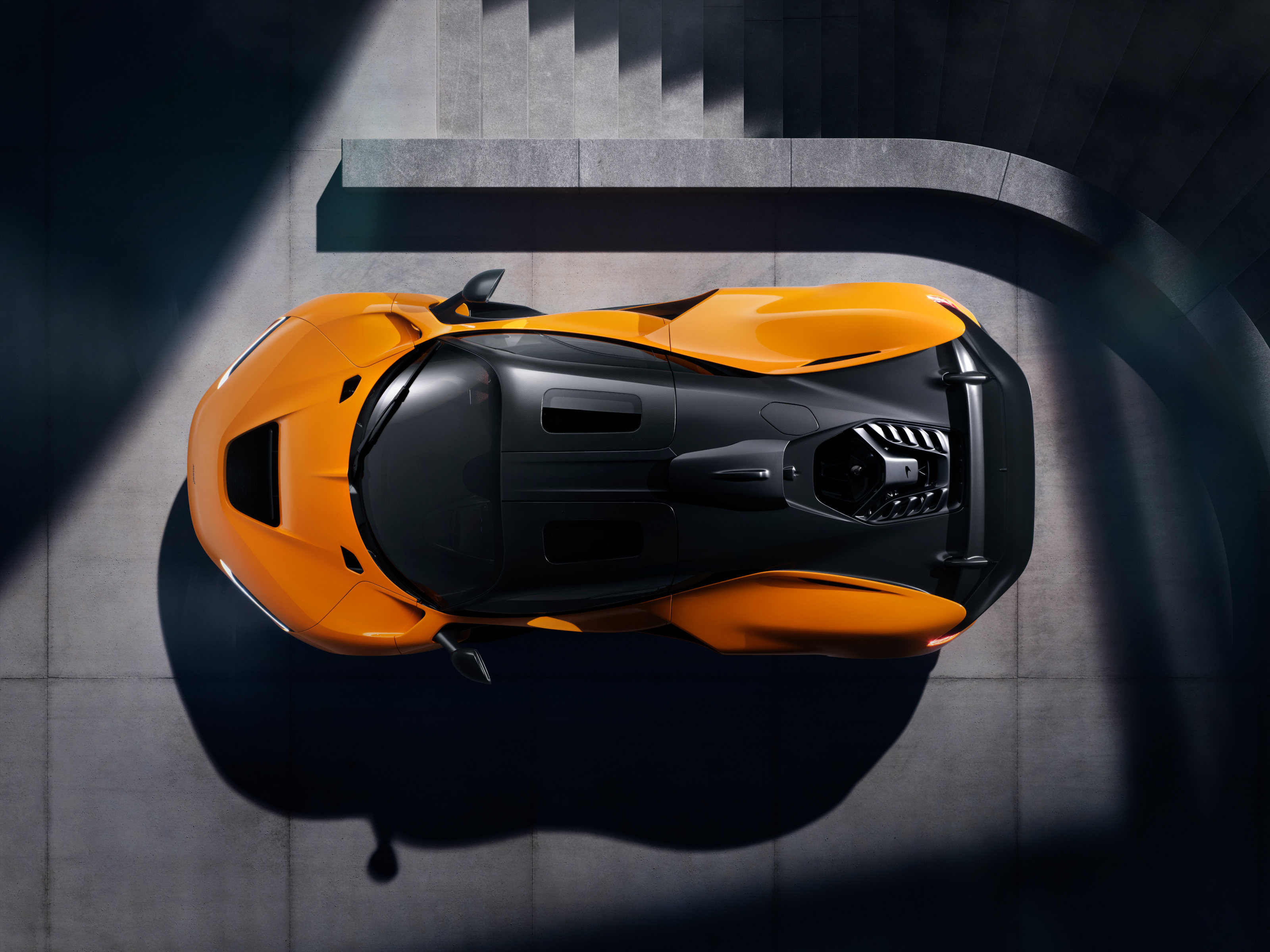
W1 from above, McLaren Automotive's newest supercar
So will the W1 match these lofty ambitions? With a starting price of £2m, plus whatever options you specify, McLaren describes the W1 as ‘the real supercar’, mindful of its growing roster of rivals and keen to draw attention back to its very real and very current motorsport heritage. McLaren’s Formula 1 team has been resurgent in recent years after a fallow period, and although W1 is a slightly more pedestrian-sounding appellation than F1 or P1, it’s very much positioned as a continuation of what the company calls its ‘World Championship mindset’.
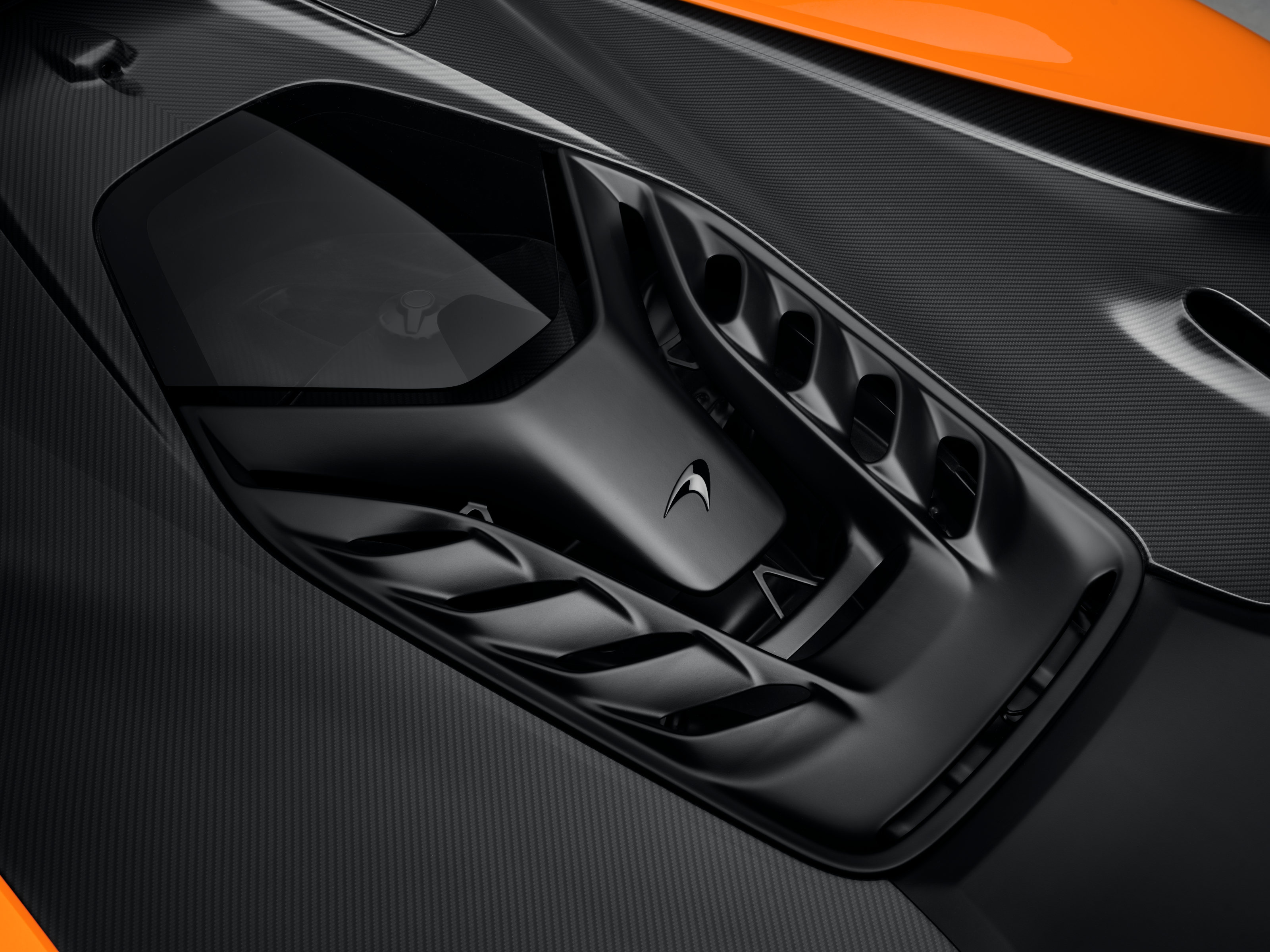
The McLaren W1 is powered by a hybridised V8
Under the skin, you’ll find an all-new 4.0-litre V8 hybrid powertrain, with a headline power figure of 1275PS. Crucially, this is ‘the highest power output of any McLaren ever and greater than all core competitors’ - we told you this was a very expensive game of Top Trumps. That total output comes from the 928PS V8, which revs all the way to an F1-adjacent 9,200rpm, and the E-module, which adds another 347PS. Despite all this technology, the W1 officially weighs in at 1,399kg, a very respectable figure in this hybrid day and age (for reference, the Bugatti Tourbillon is 1,995kg).
Wallpaper* Newsletter
Receive our daily digest of inspiration, escapism and design stories from around the world direct to your inbox.
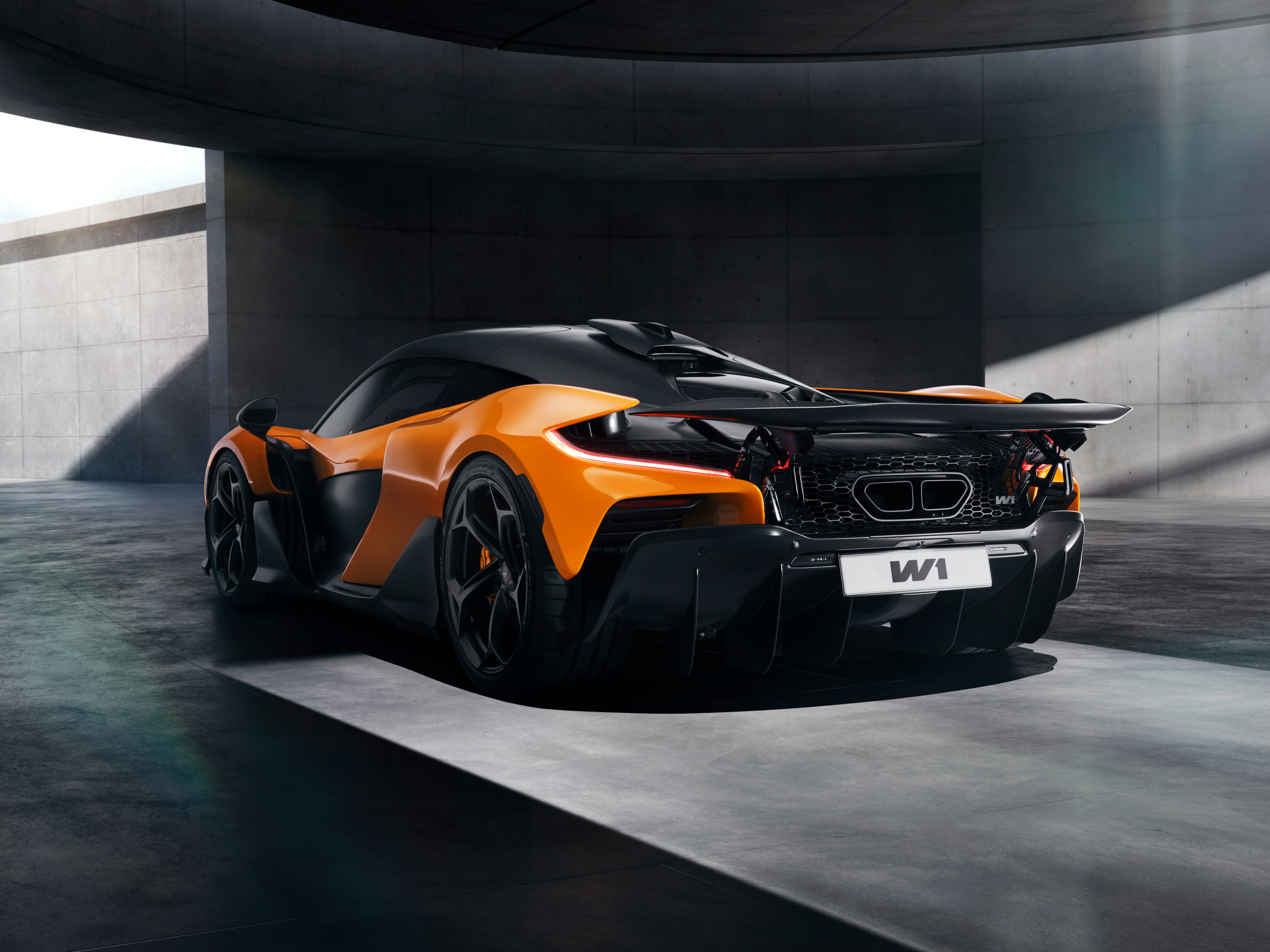
The McLaren W1 is bristling with active aerodynamics
Power and weight are accompanied by a fiendishly complex aerodynamic arrangement and race mode system that effectively lowers the ride, with active aerodynamic systems that cantilevers the rear wing an addition 30cm over the rear of the car. All this adds up a set of performance figures that outdo its predecessors, including the 2020 McLaren Speedtail, 2018 Senna and the original F1 itself. The new car tops out at 350km/h (217mph) and can accelerate from zero to 300km/h (186mph) in 12.7 seconds. It takes just 100 metres to bring the car to a standstill from 200km/h.
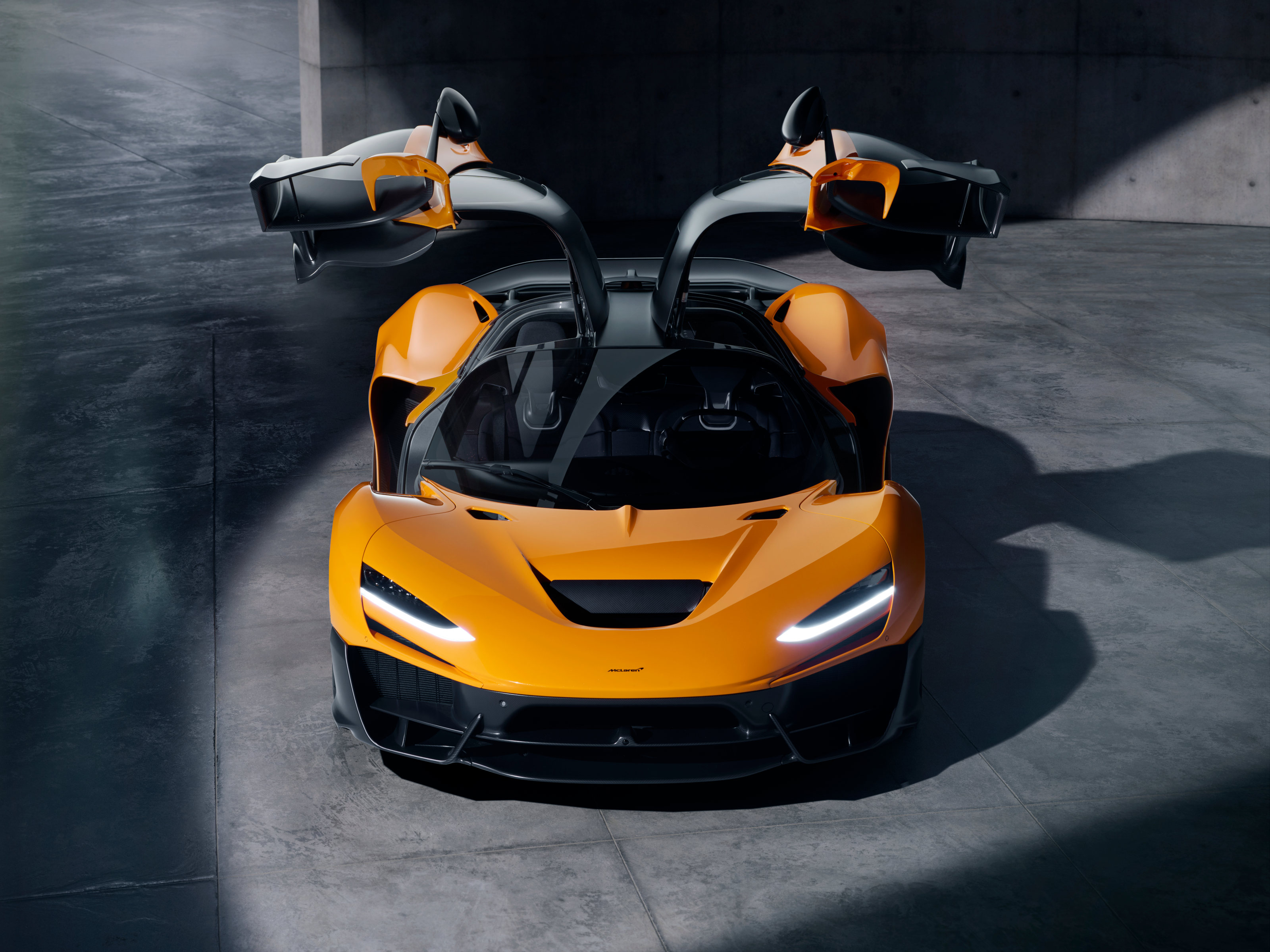
The W1 is the first McLaren to feature Anhedral doors
Naturally, the W1 looks the part. From the upward opening Anhedral doors, a replacement for McLaren’s traditional Dihedral door design, every little component has been shaped with weight saving, function and utility in mind. As with most modern McLarens, there’s excellent all-round visibility (atypical for cars in this rarefied sector), although the W1 eschews the F1’s famous central driving position flanked by two passengers in favour of a conventional two-seat set-up.
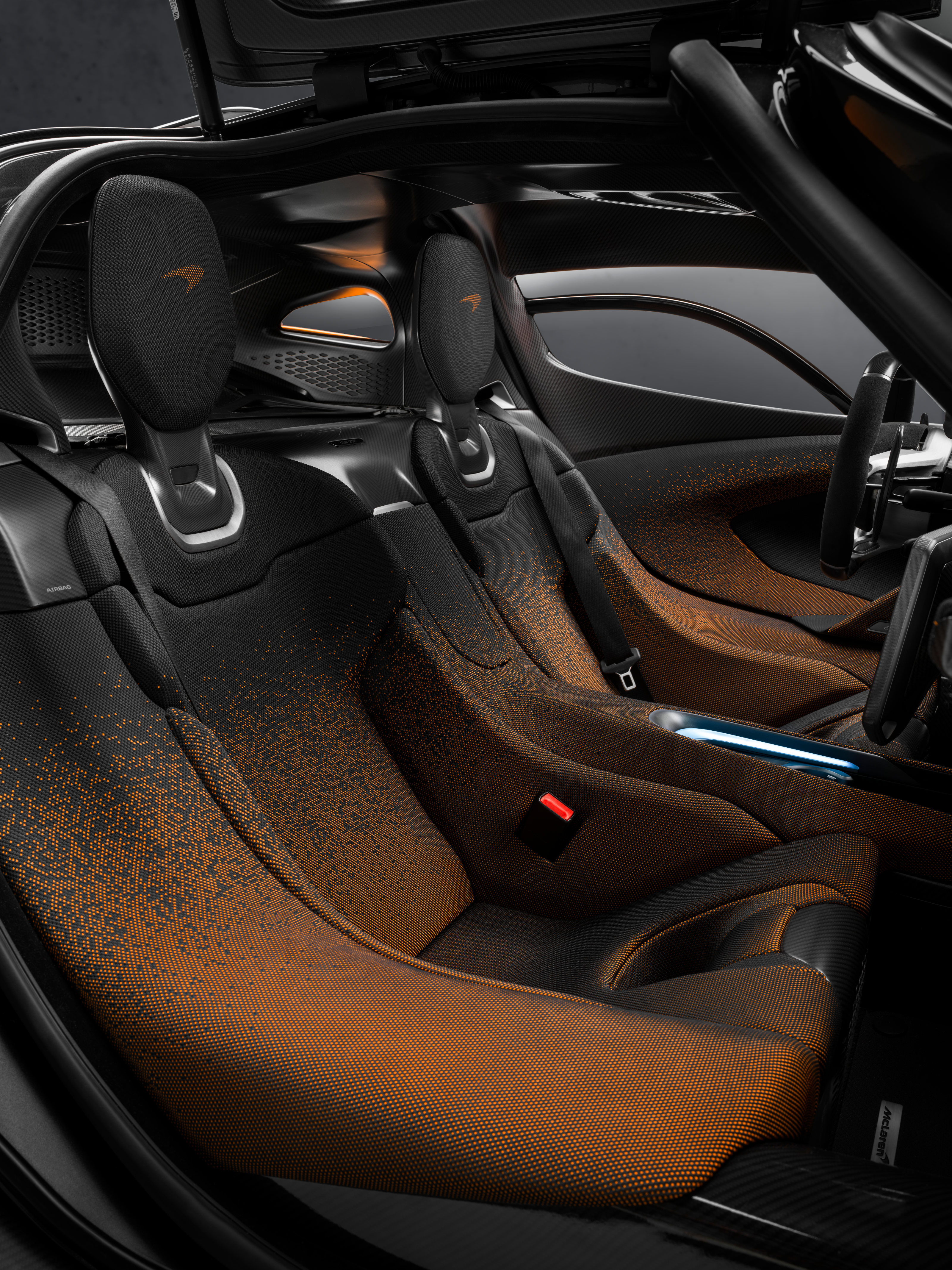
McLaren W1 interior, featuring the company's new InnoKnit material
The W1 has a fixed driver's seat with moving pedals and steering wheel to accommodate different driver sizes. There's 117 litres of storage space for luggage as well as air conditioning, a bespoke Bowers & Wilkins audio system and even a cupholder. The in-house McLaren Special Operations division will no doubt be called upon to transform each of the planned 399 cars into a unique statement of its owner’s tastes, for better or for worse (and all those build slots have already been allocated).
We especially like the pioneering ‘McLaren InnoKnit’, a super-lightweight interior material that is knitted to fit precisely across the surfaces. It covers the sunken bucket seats and surrounding carbon tub, creating an undulating landscape into which you slide yourself.
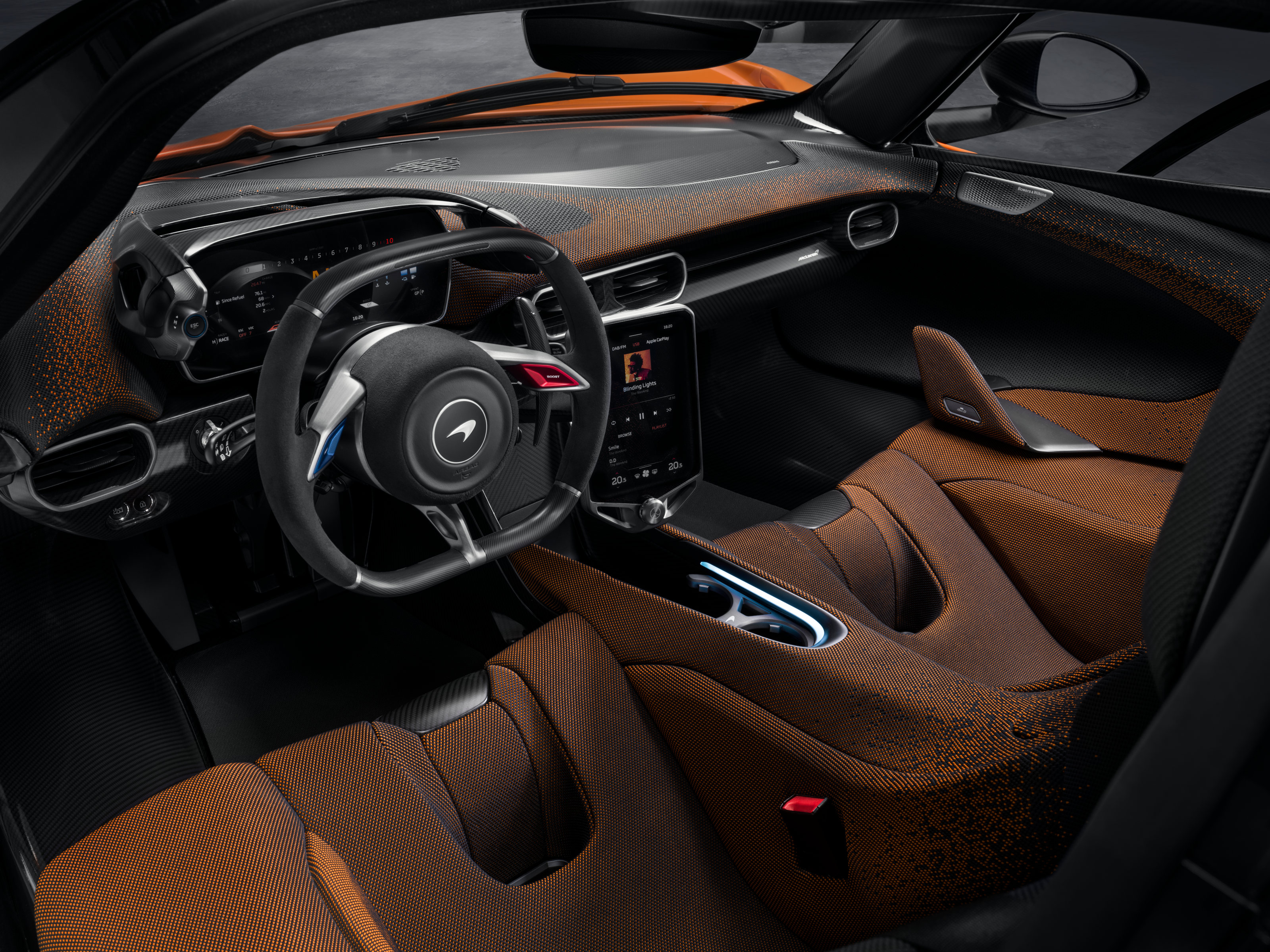
The McLaren F1 has a driver focused dashboard and cabin
The design was overseen by Tobias Sühlmann, Chief Design Officer, and represents an evolution of McLaren's now-familiar combination of light and dark design elements. The latter represents the aero elements in the lower part of the body, with ducts, splitters and scoops carved deep into the heart of the car.

The W1's aerodynamics are carved deep into the bodywork
‘The W1 is immediately and unmistakeably a McLaren,’ Sühlmann says, ‘The shoulder-line leaping forward, the pronounced wheelarches, the sunken cabin and the short overhang and open structure at the rear of the car are all pure McLaren design characteristics, defining an extraordinary new supercar that will have its own chapter in McLaren history.’
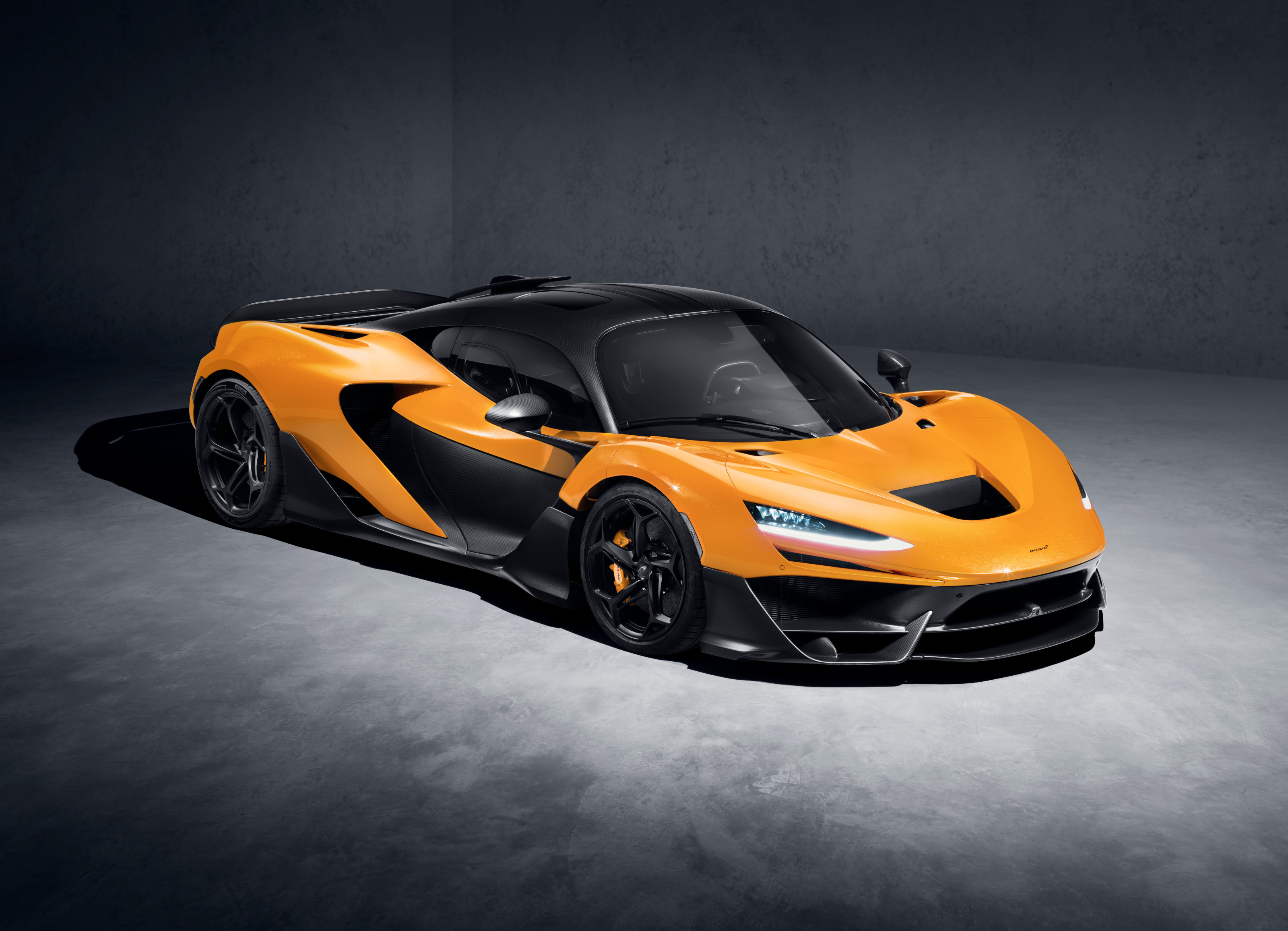
The new McLaren W1
McLaren W1, McLaren Automotive, Cars.McLaren.com, @McLarenAuto
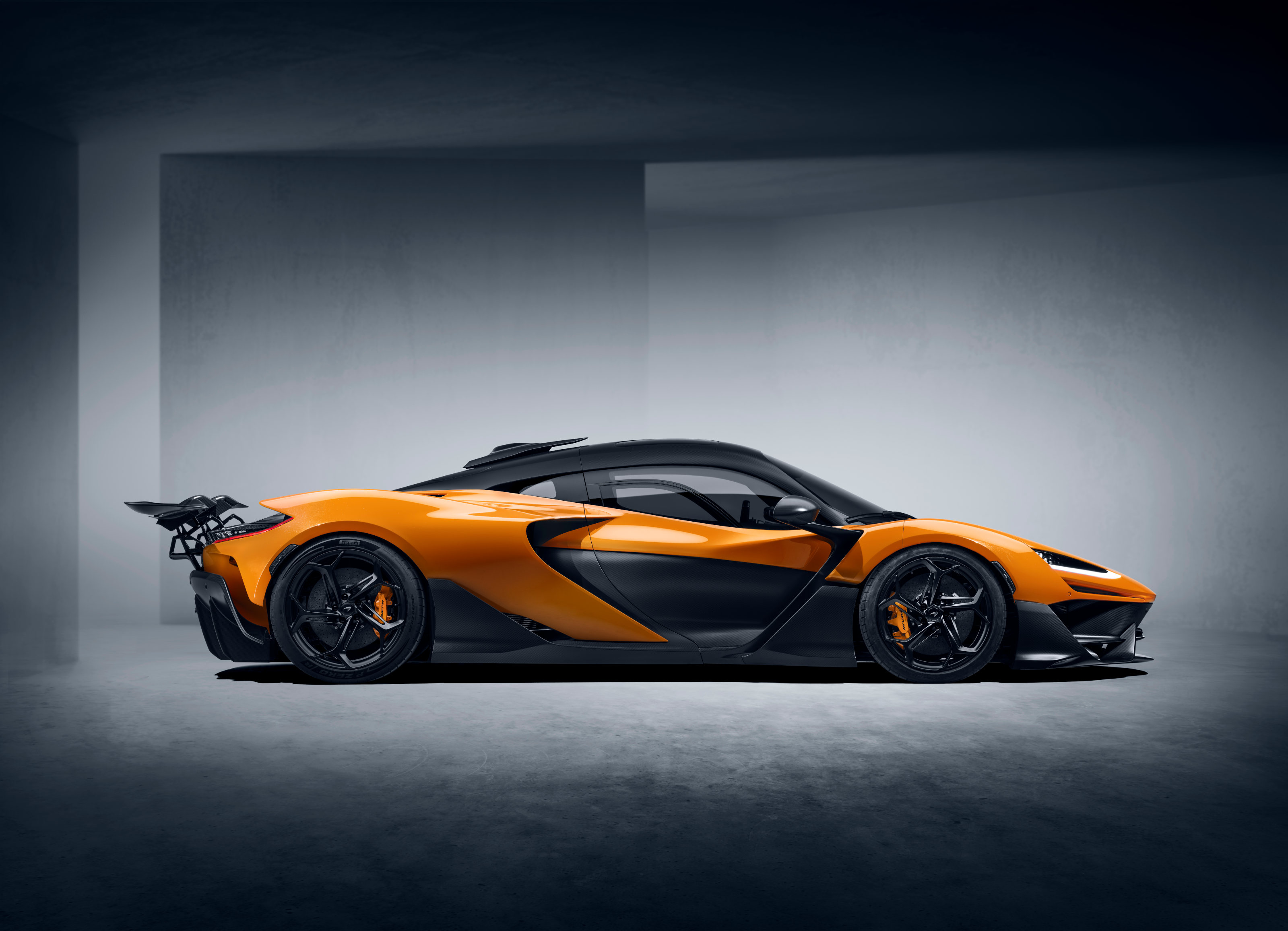
In race mode, the McLaren W1 lowers its suspension and the rear wing extends the length of the car by 30cm
Jonathan Bell has written for Wallpaper* magazine since 1999, covering everything from architecture and transport design to books, tech and graphic design. He is now the magazine’s Transport and Technology Editor. Jonathan has written and edited 15 books, including Concept Car Design, 21st Century House, and The New Modern House. He is also the host of Wallpaper’s first podcast.
-
 Warp Records announces its first event in over a decade at the Barbican
Warp Records announces its first event in over a decade at the Barbican‘A Warp Happening,' landing 14 June, is guaranteed to be an epic day out
By Tianna Williams
-
 Cure your ‘beauty burnout’ with Kindred Black’s artisanal glassware
Cure your ‘beauty burnout’ with Kindred Black’s artisanal glasswareDoes a cure for ‘beauty burnout’ lie in bespoke design? The founders of Kindred Black think so. Here, they talk Wallpaper* through the brand’s latest made-to-order venture
By India Birgitta Jarvis
-
 The UK AIDS Memorial Quilt will be shown at Tate Modern
The UK AIDS Memorial Quilt will be shown at Tate ModernThe 42-panel quilt, which commemorates those affected by HIV and AIDS, will be displayed in Tate Modern’s Turbine Hall in June 2025
By Anna Solomon
-
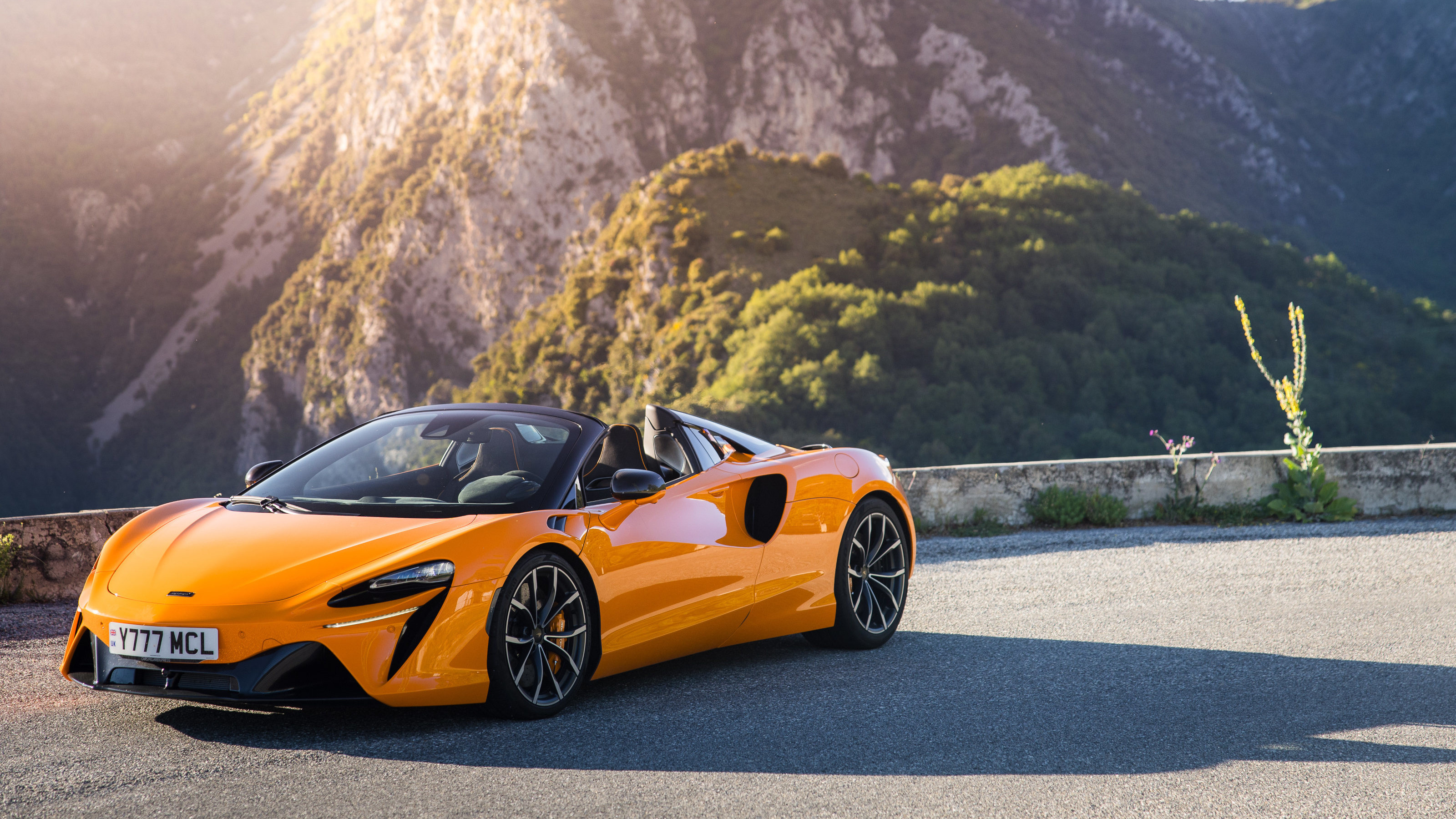 A technical tour de force, McLaren’s Artura Spider makes an unconventional supercar
A technical tour de force, McLaren’s Artura Spider makes an unconventional supercarMcLaren prides itself on technical perfection. Its newest series production supercar ticks all the right buttons but demands you make an emotional commitment
By Jonathan Bell
-
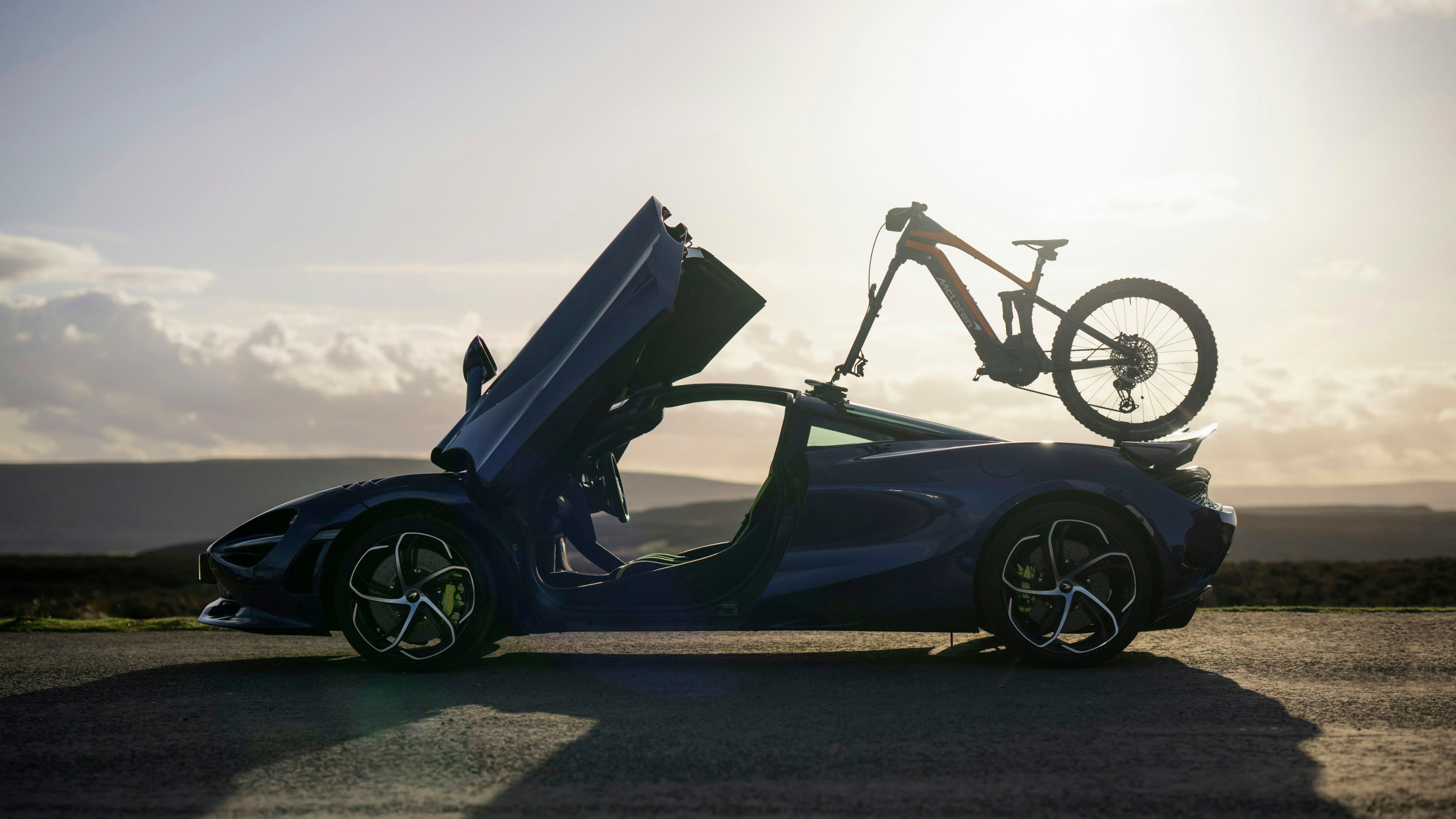 Sports carmaker McLaren enters the performance e-bike market
Sports carmaker McLaren enters the performance e-bike marketMcLaren Bikes’ four new machines bring speed, technology and style to electric mountain biking
By Jonathan Bell
-
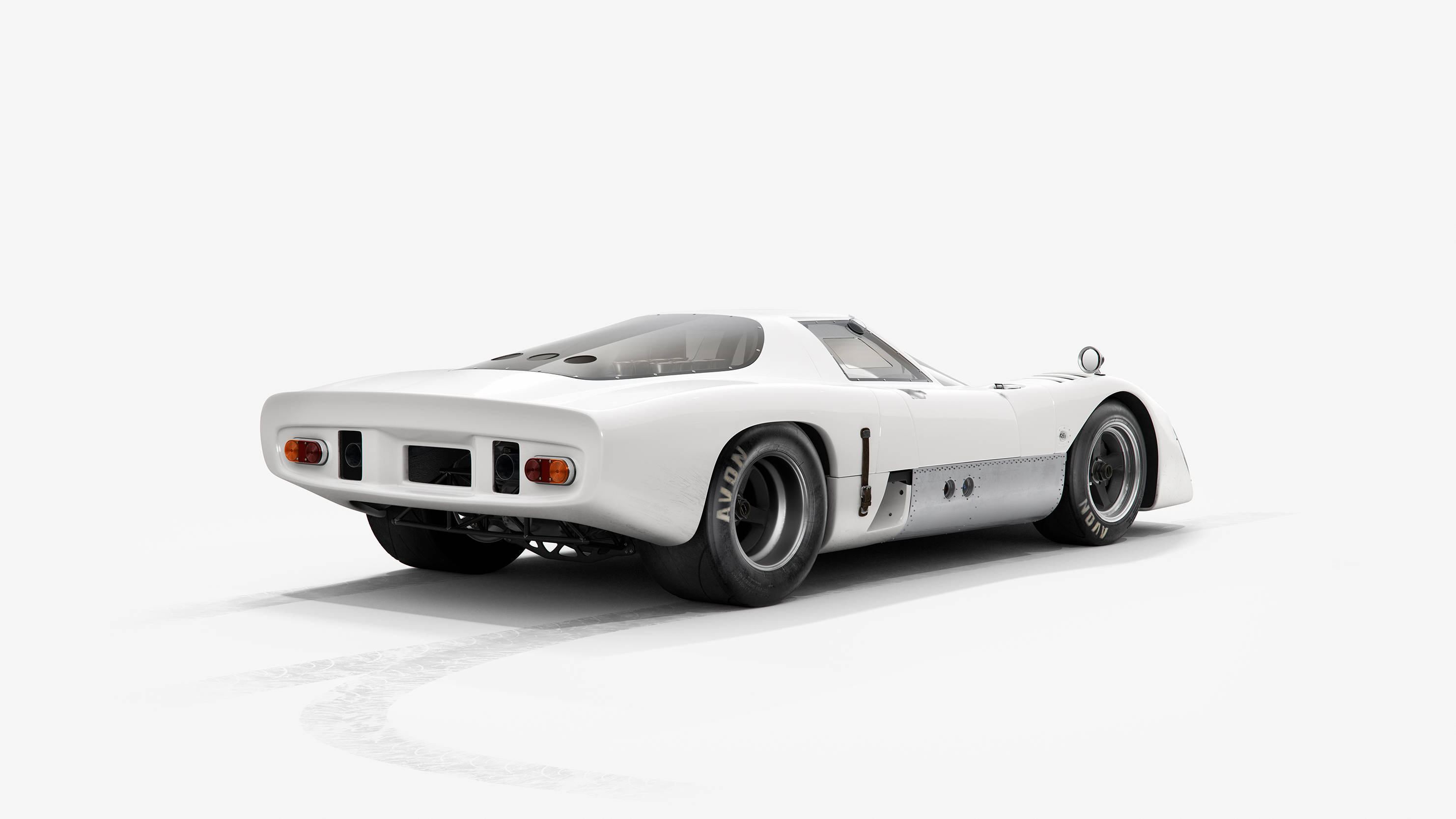 McLaren M6GT is the latest in INK’s series of ‘plain bodied’ racing cars
McLaren M6GT is the latest in INK’s series of ‘plain bodied’ racing carsINK reimagines the McLaren M6GT, dubbed ‘Bruce’s Unfinished Masterpiece’, as a purist piece of automotive sculpture
By Jonathan Bell
-
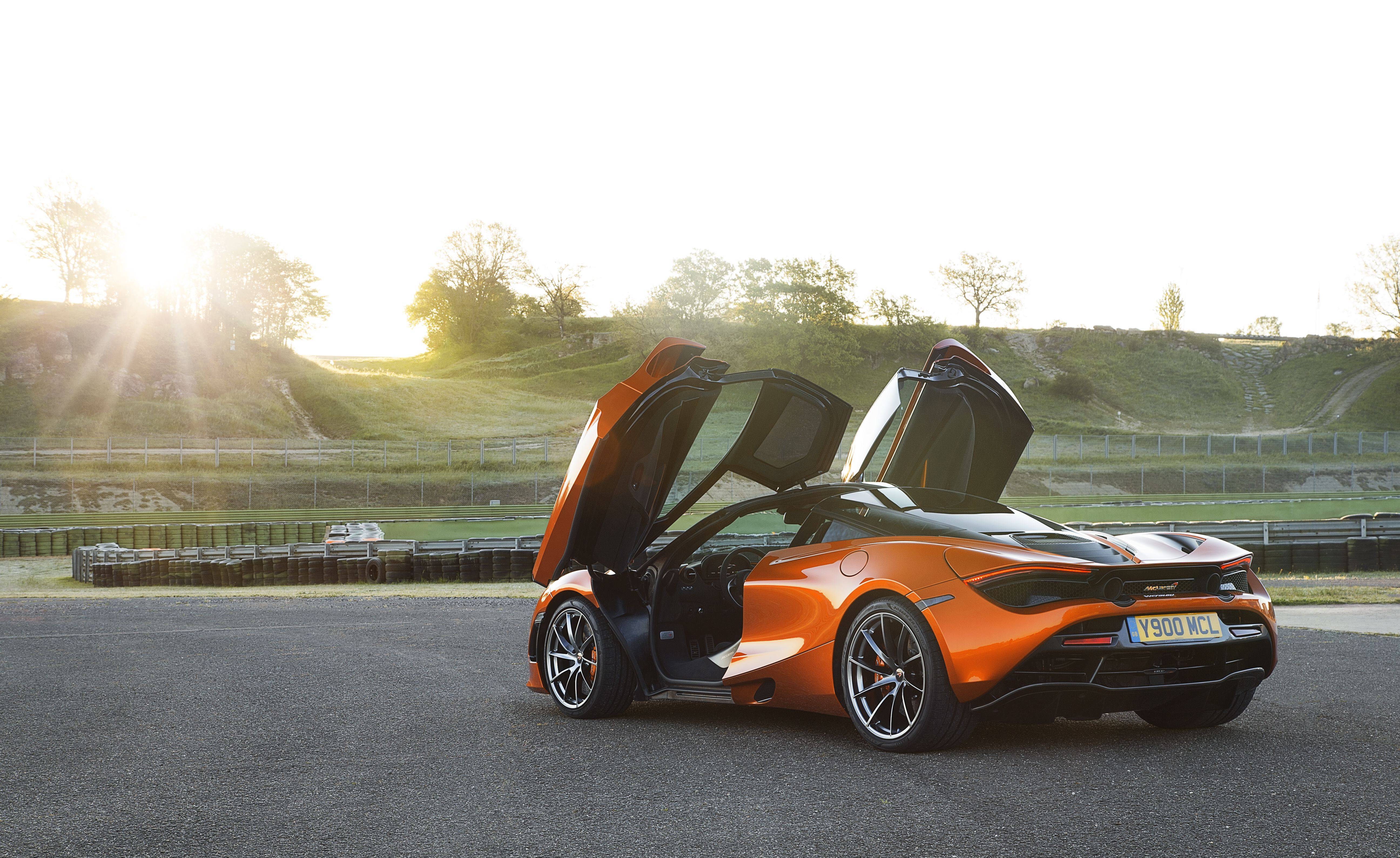 McLaren’s flagship supercar has still got what it takes
McLaren’s flagship supercar has still got what it takesFive years after its launch, the McLaren 720S is still the purist’s supercar of choice. Few cars can go faster and yet remain so precise and amenable to drive
By Jonathan Bell
-
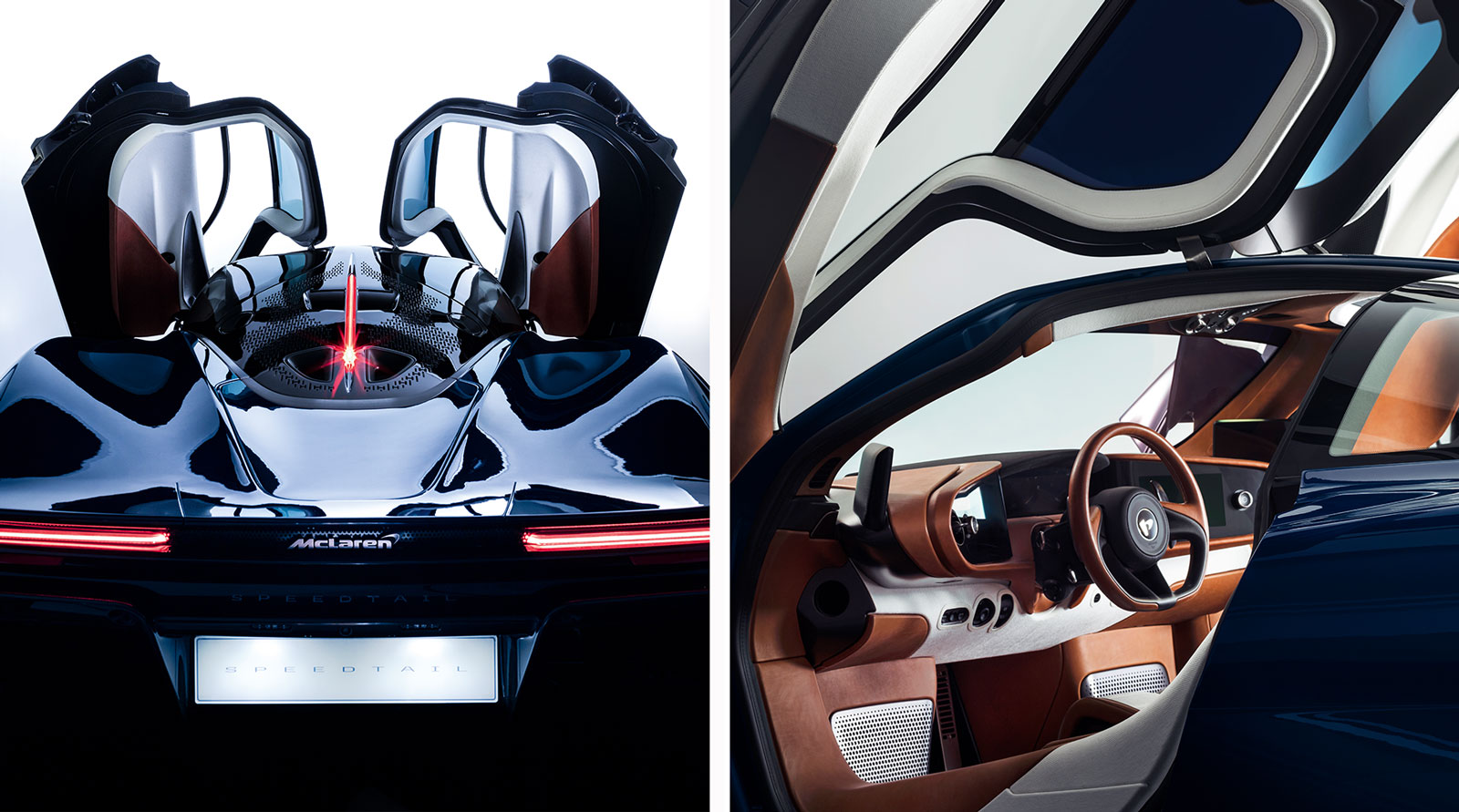 Hermès hits hyperdrive with a one-off car design for McLaren
Hermès hits hyperdrive with a one-off car design for McLarenHermès hits hyperdrive with a one-off car design for McLaren
By Jonathan Bell
-
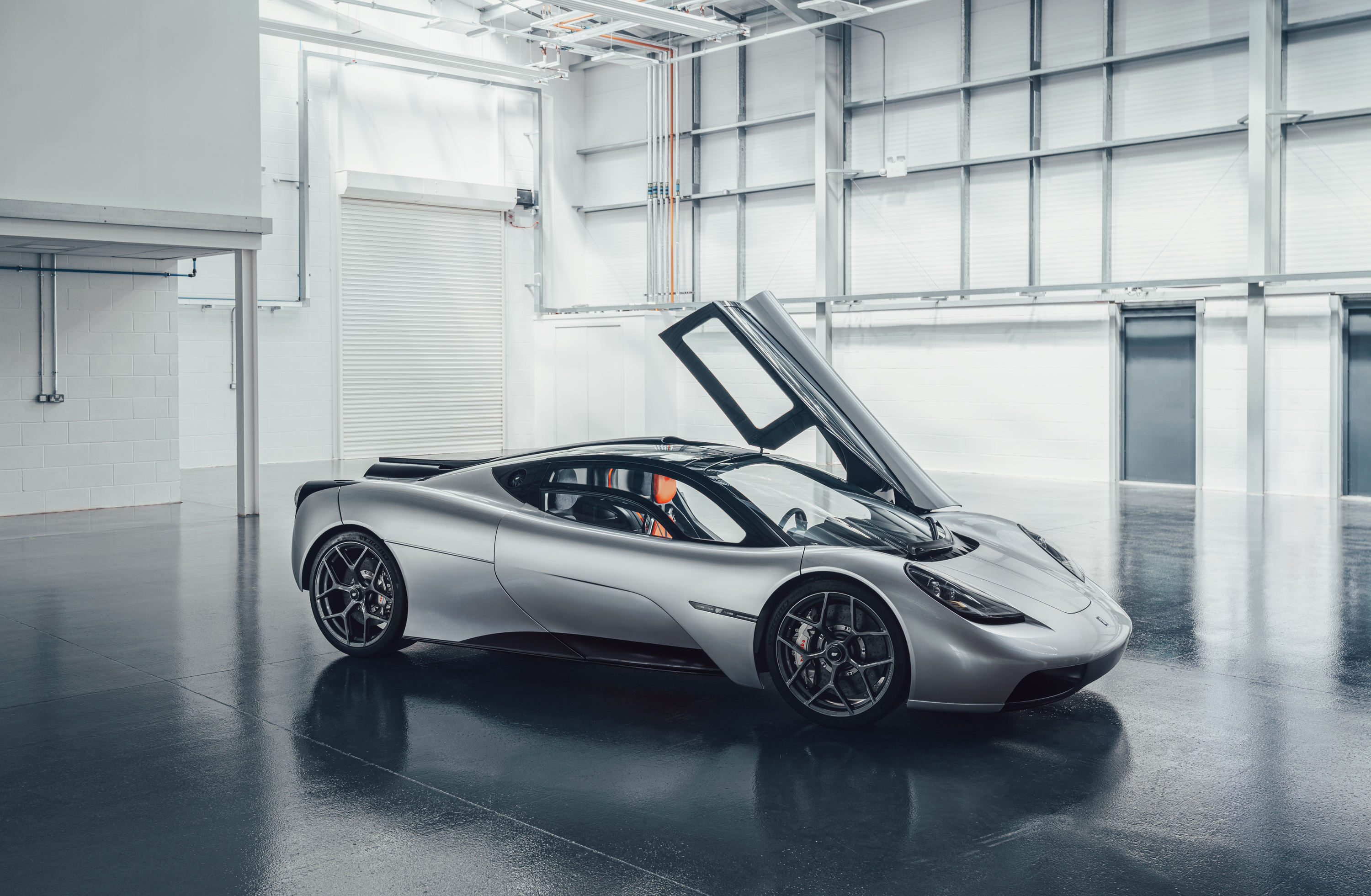 Gordon Murray’s T.50 supercar rewrites the rule book
Gordon Murray’s T.50 supercar rewrites the rule bookThe new T.50 is a nod to the past and future of Gordon Murray's storied design processes
By Jonathan Bell
-
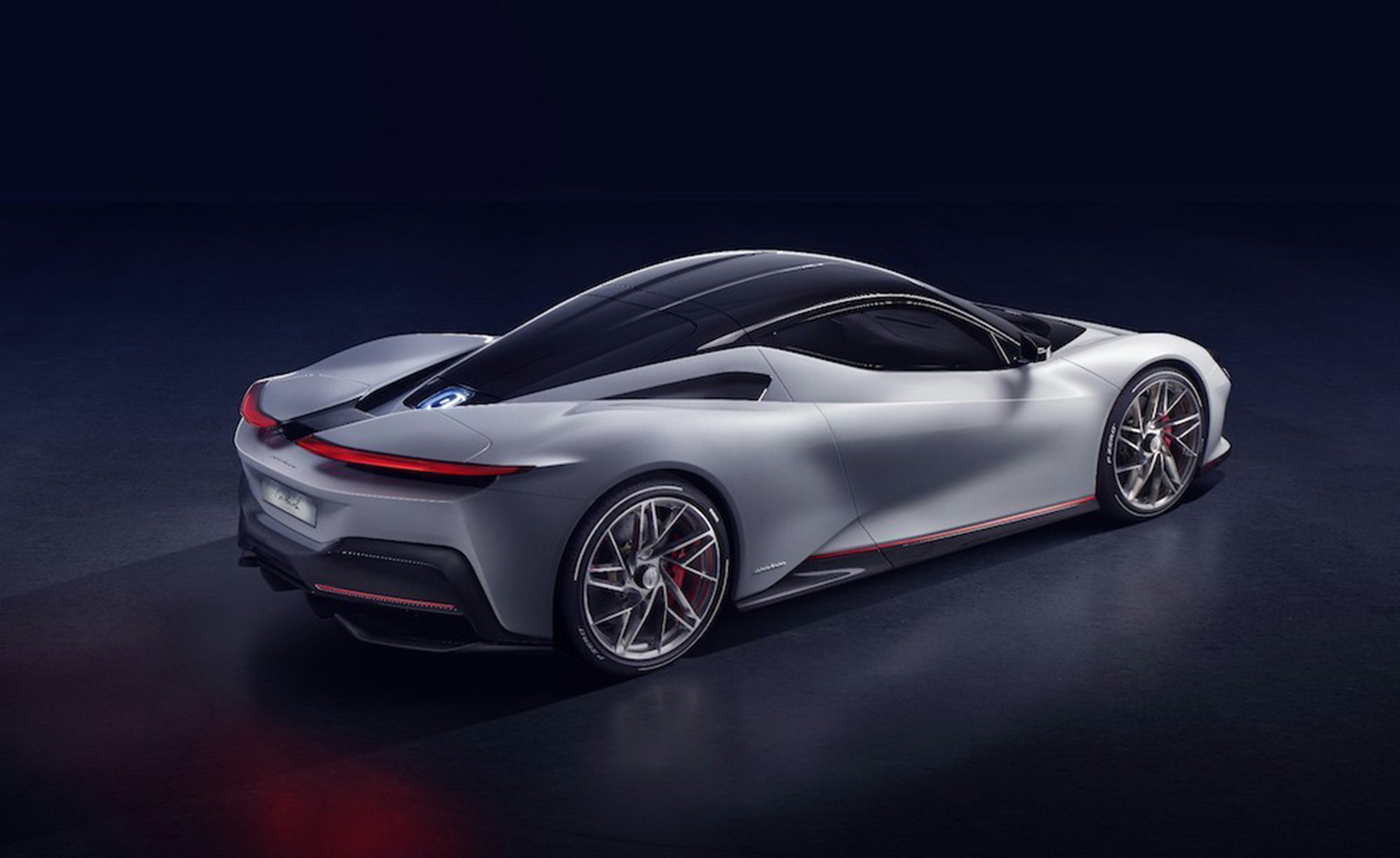 Sustainability shapes the narrative arc of Geneva Motor Show 2019
Sustainability shapes the narrative arc of Geneva Motor Show 2019By Nargess Banks
-
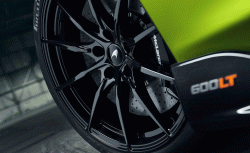 McLaren's twin convertible launch boasts supercar drama
McLaren's twin convertible launch boasts supercar dramaThe 720S and 600 LT Spiders set high expectations for McLaren's upcoming 18 car strategy
By Jonathan Bell